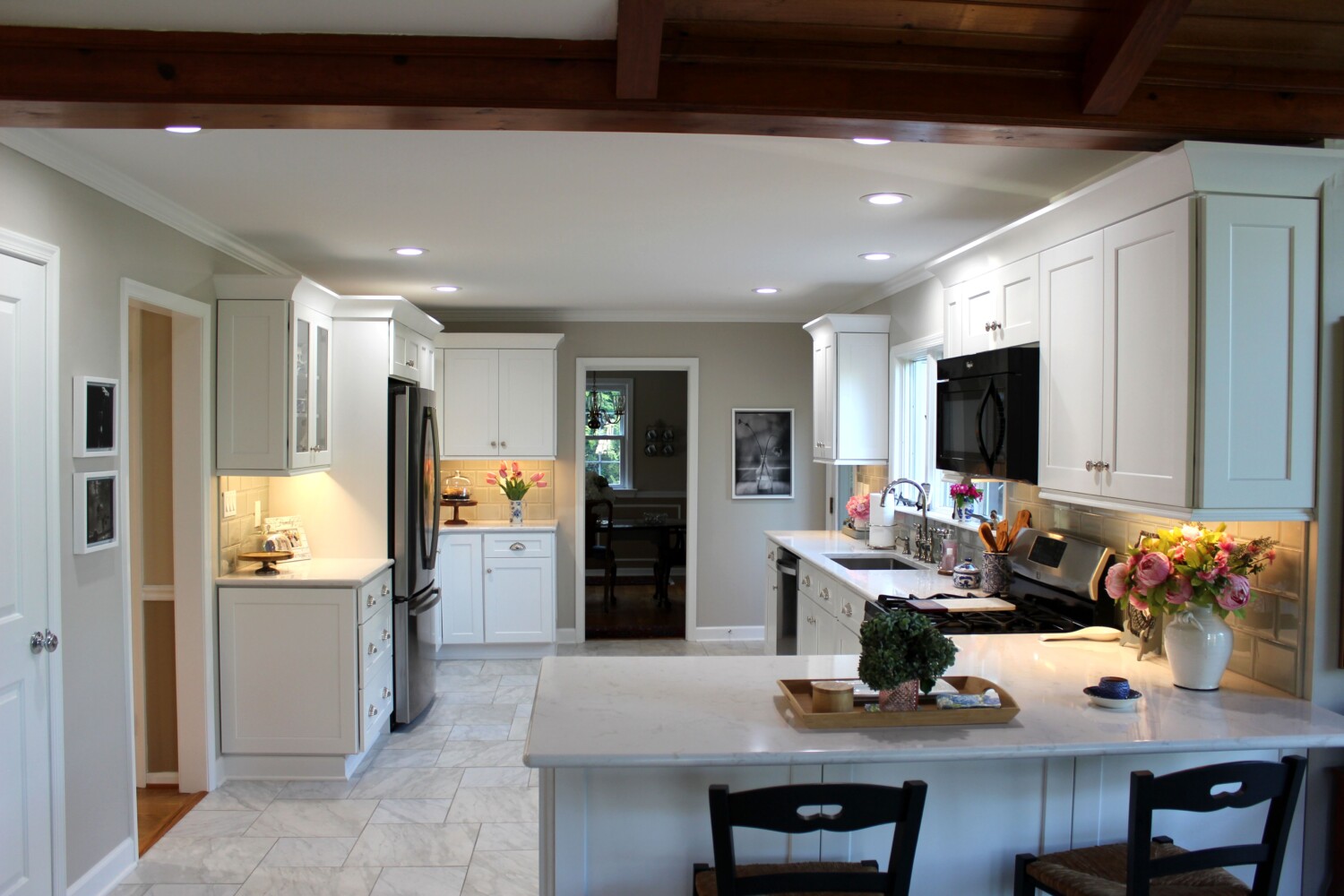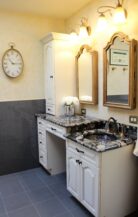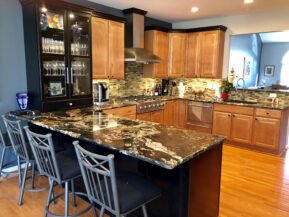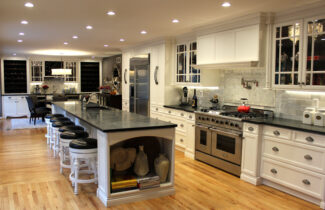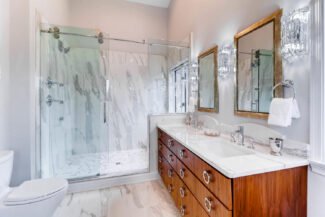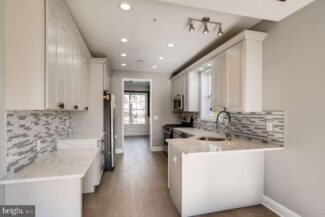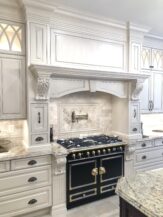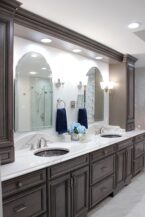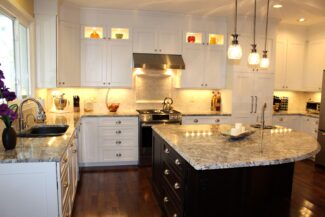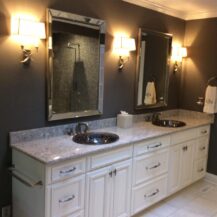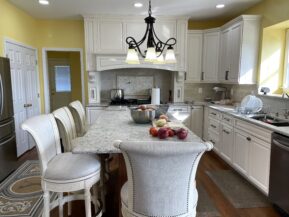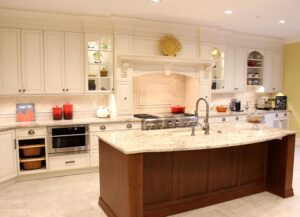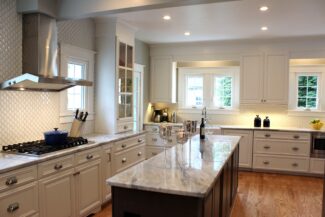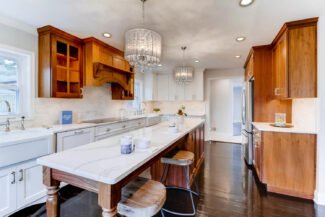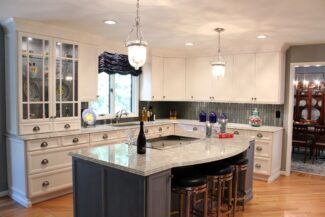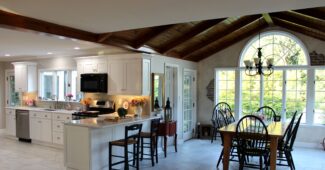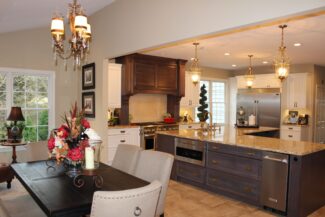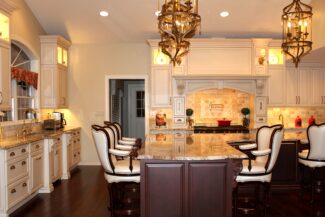Whether you’re starting a kitchen renovation from scratch or replacing your current cabinetry, shopping for new kitchen cabinets is a big task. Cabinets from big-box retail stores and custom cabinet makers all vary in appearance, cost, and quality.
How do you know if stock, semi-custom, or custom cabinets are right for your kitchen renovation? Stock, custom, and semi-custom cabinetry are all great choices for a kitchen renovation depending on the project. They each offer a unique set of pros and cons, which our following three articles will relate in simple, straightforward terms.
Let’s go cabinet shopping!
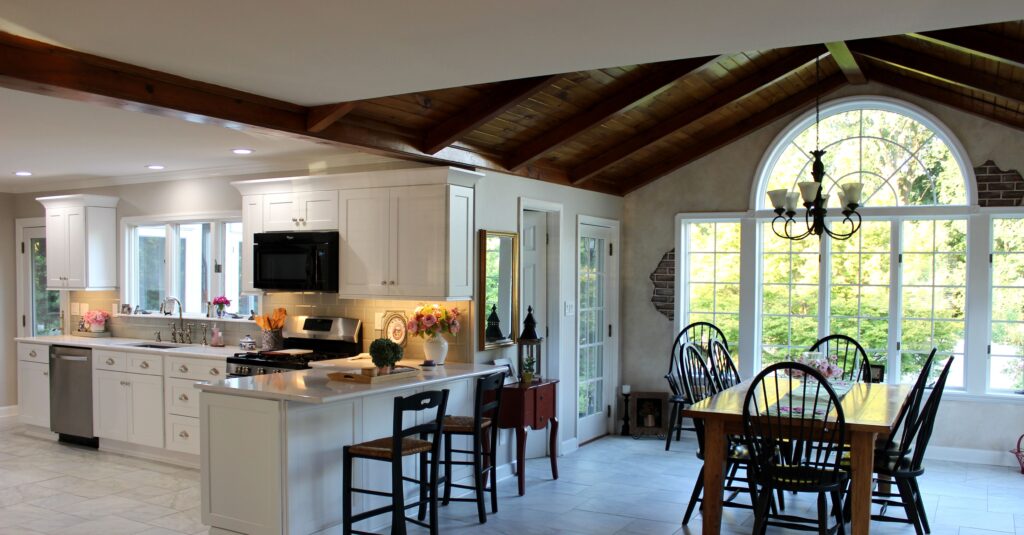
Stock cabinets are ready-made, pre-manufactured products with zero customization options. With stock cabinetry, what you see is what you’re taking home.
Home Depot, Lowe’s, and IKEA are all good reference points to understand how stock cabinets work. Some semi-custom cabinet makers may also offer stock cabinets—they might pre-manufacture their most popular products and have them ready to go for fast delivery. But more often than not, it’s the Asian manufacturers with the capacity to mass-produce stock cabinets.
Stock cabinets are offered in set sizes, and you have to select the right cabinets to fit your kitchen space. While these set sizes may vary from manufacturer to manufacturer, there are some industry-wide norms that you can expect to find.
In terms of width, stock cabinetry tends to begin at 9-inches wide and moves up in 3-inch increments. The largest size available is generally about 36-inches wide. As for height of wall cabinets, stock cabinets come in 30-inches, 36-inches, and 42-inches tall. For homeowners with irregularly shaped kitchens, building a cabinetry system using only set sizes isn’t always easy. It can feel like a game of Tetris trying to arrange stock cabinets into your space just right! In addition to standard dimensions, stock cabinetry is built according to the manufacturer’s quality standards.
Generally speaking, stock cabinets are a retailer’s most basic, entry-level product. That means the materials and construction methods used are likely economical and low-tier quality. For instance, you’d be hard-pressed to find stock cabinets in cherry—it’s an expensive wood species that’s almost always an upgrade option in the custom and semi-custom world. Rather, you can expect stock cabinetry to be built with affordable materials such as melamine and plywood with veneers, simple joinery, and basic hardware.
Stock cabinets aren’t always low-quality products, but they certainly can be. If you’re shopping stock, do your due diligence when researching the cabinet make-up. Saving money upfront isn’t worth it if you’ll have to pay excessively for repairs and replacement parts down the line.
The major advantage to choosing stock cabinets is the fast lead time. Stock cabinets can be assembled and delivered in just a few days after order. This makes it perfect for contractors, house flippers and real estate agents who are trying to sell a property quickly.
Key features, benefits & potential drawbacks
- Standardized Sizes and Finishes: Stock cabinets come in a limited range of pre-set sizes, typically in 3-inch increments, and a selection of common finishes like white, gray, or a light stained wood.
- Mass Production: They are manufactured in large quantities, which allows for cost savings and faster availability compared to custom or semi-custom options.
- Budget-Friendly: Due to the lack of customization and mass production, stock cabinets are generally the most affordable option for kitchen renovations. This makes it a perfect fit for multi-family buildings, low-end builders, and house flippers.
- Limited Customization: Stock cabinets offer little to no customization options for size, color, or materials.
- Installation: While they are pre-assembled, installation can still be done by homeowners or professionals.
- Quality: The materials used in stock cabinets can vary, with some being made from lower-grade materials like particleboard or MDF.
- Availability: Stock cabinets are generally readily available for purchase, either online or in physical stores.
- Warranty: Stock cabinets only offer a 1 to 5 year warranty depending on the manufacturer.
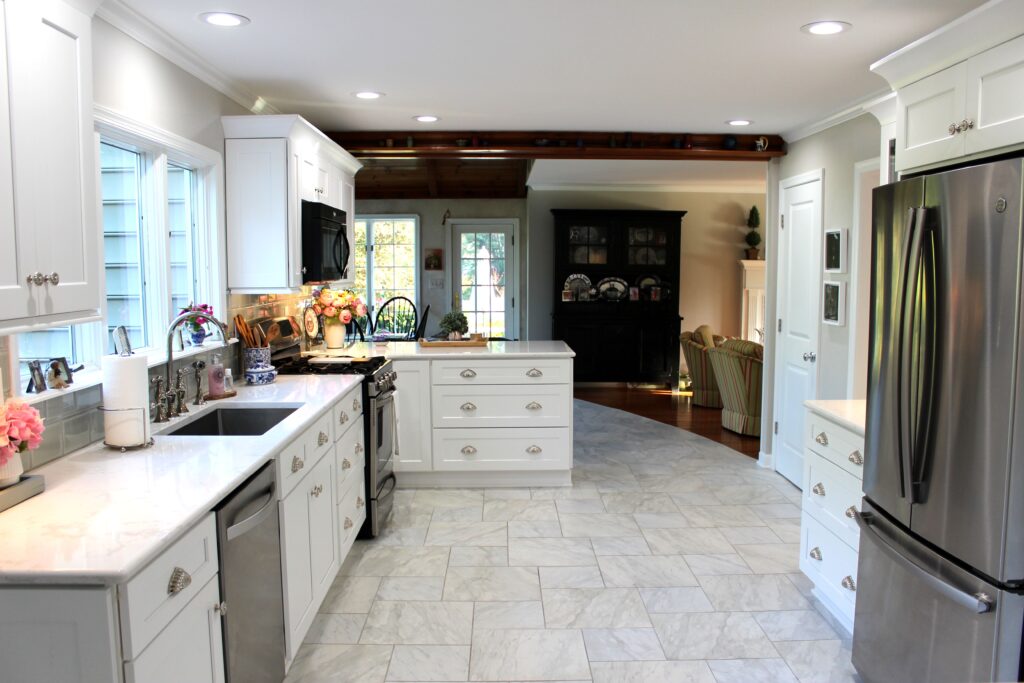
What’s Next?
Choosing kitchen cabinetry is one of the most important decisions in any kitchen renovation project. As you weigh your options between pre-made, semi-custom, and custom cabinetry, take your time to decide which choice is ideally suited to you.
Pre-made cabinets offer more in terms of budget and immediate availability, while custom cabinets offer greater design flexibility, better design options, and superior quality. Semi-custom is the bridge between the two. Time to get out that old pen and paper, and with the information provided in this article, write out a pros and cons list of your own.
No matter what your decision and budget, we’re here for you at Grandior. With over 20 years of experience to our name, we provide our clients with a wholly customized experience with our talented team of designers.
Visit us at our Hunt Valley, MD showroom or request a consultation to get started on your dream remodel today.
WHEN YOU REQUIRE EXCELLENCE, YOUR CHOICE IS GRANDIOR!
SCHEDULE A CONSULTATION
DISCOVER HOW WE CAN BRING YOUR DREAMS TO REALITY.
WE LOOK FORWARD TO INTRODUCING YOU TO THE WORLD OF GRANDIOR IN PERSON.

